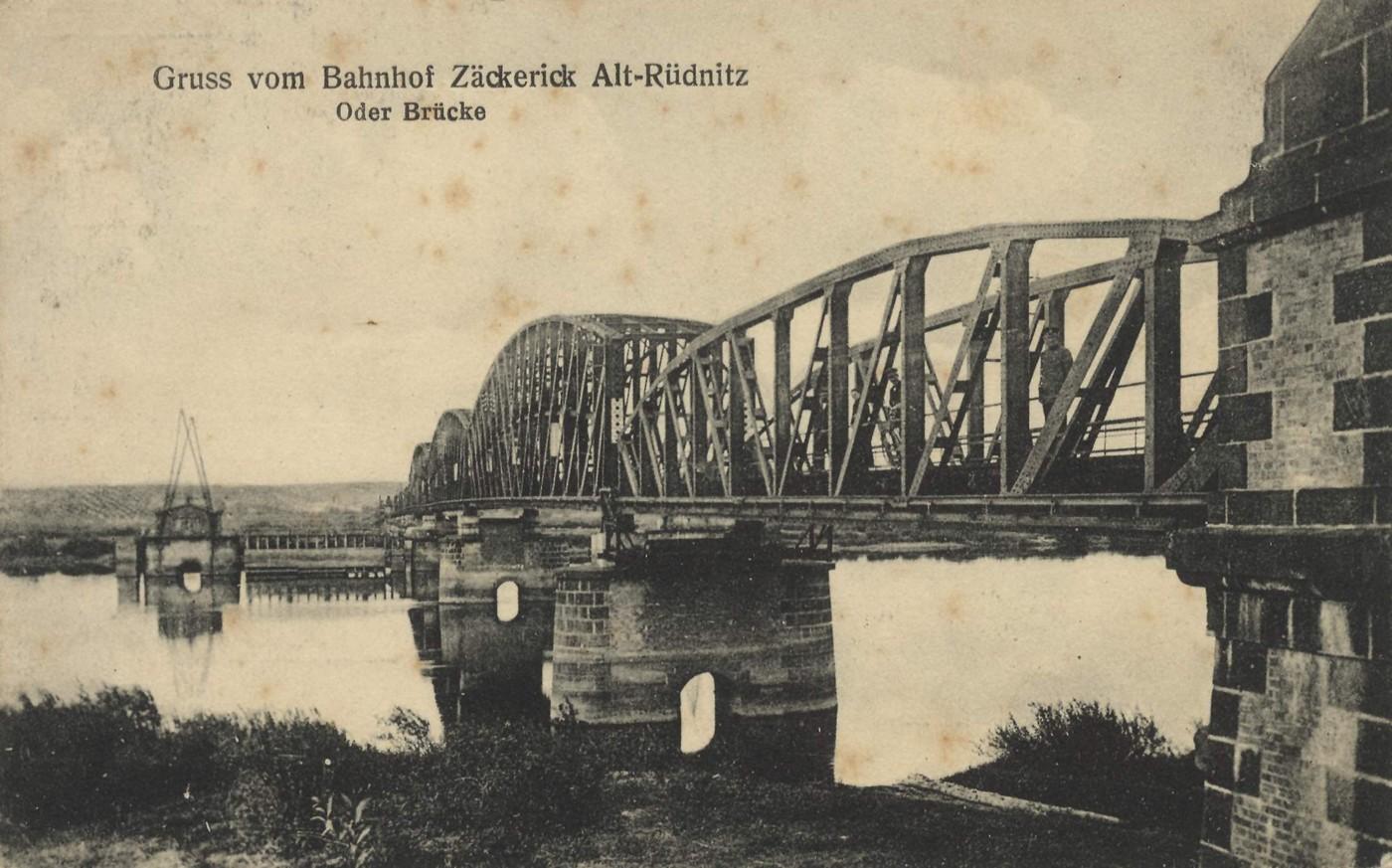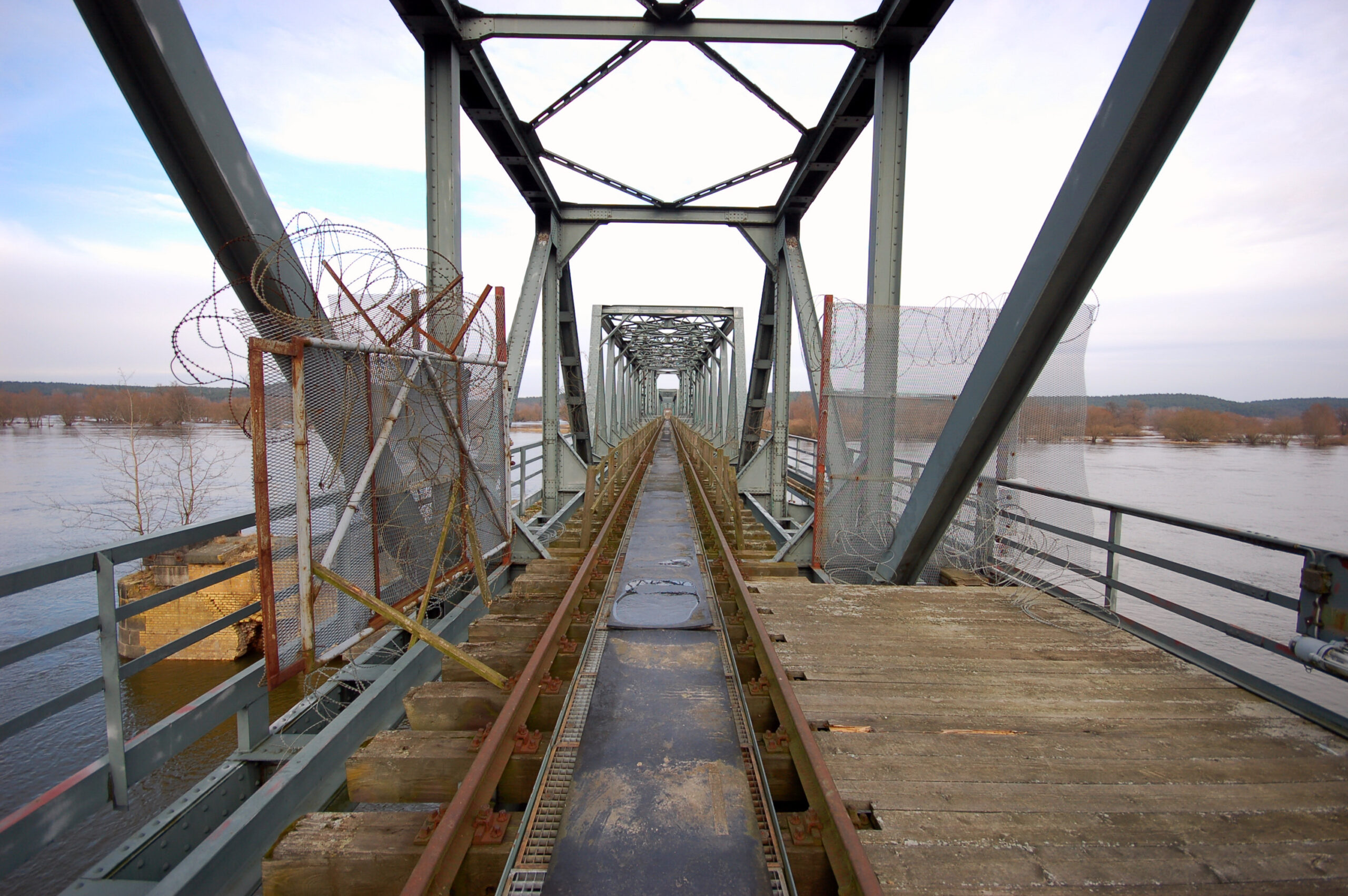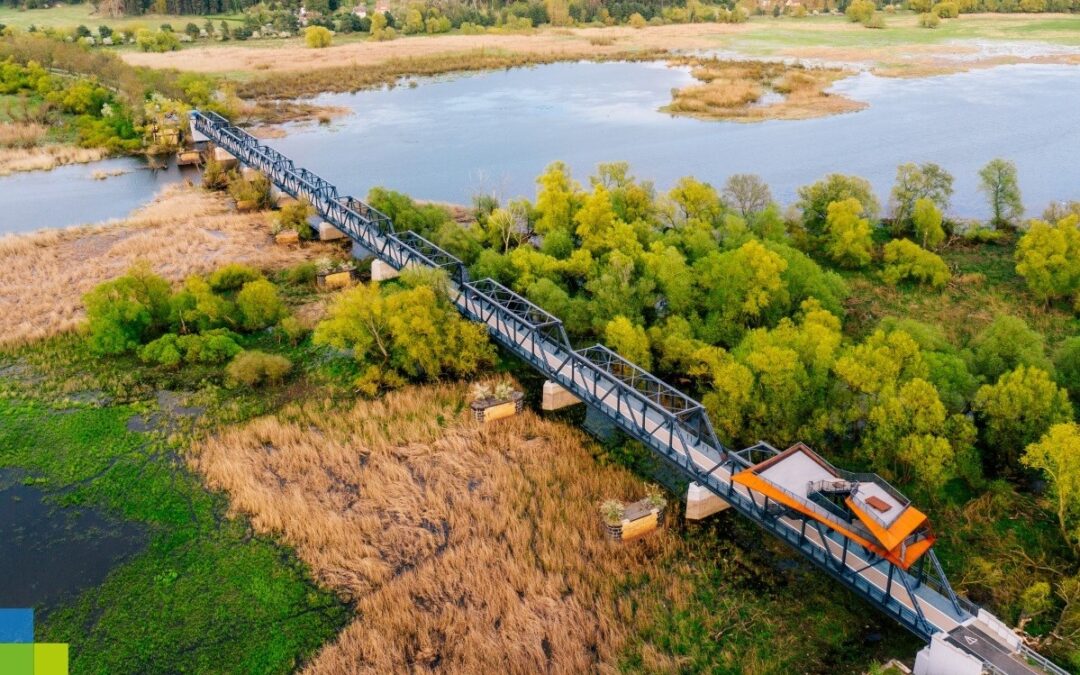A historic rail bridge connecting Poland and Germany that was destroyed in the war and had fallen into disrepair was reopened on Saturday. It will now serve as a footpath leading through a landscape park as well as part of a cycle route connecting to Berlin.
Officials on both sides of the border also hope that it can act a symbol of reconciliation between the two countries, as well as boosting local tourism.
When it was built in 1892, the 785-metre Oderbrücke Bienenwerder bridge was the longest construction straddling the Oder river, which runs along Poland’s western border with Germany.

A postcard from 1910/1920 (Fotopolska.eu /Wikimedia Commons, under public domain)
In January 1945, the rail bridge, which at the time was in German territory, was blown up by the retreating Nazi army. It was reconstructed as a military crossing in the 1950s, but no longer served rail traffic.
The bridge was finally decommissioned in 1999, but then fell into disrepair. In 2018, the Polish authorities overseeing a landscape park in West Pomerania Province and the Barnim-Oderbruch local council on the German side of the border signed an agreement to revive the bridge as a foot and bike path.

View of the bridge in 2010 (Ütze/Wikimedia Commons (under CC BY-NC-ND 3.0))
The renovation of the bridge cost 22 million zloty (almost €5 million). Due to the pandemic, the official opening had been postponed since May, when the Polish section of the bridge was finished. The German side is due to be completed in the coming months.
The new tourist attraction features a viewing platform perched on top of one of the bridge’s trusses, along with benches and educational boards along the bridge. It is also part of a longer bike path leading to Berlin, which is 60 kilometres west of the border.
“This bridge will close the gap in the tourism infrastructure between Poland and Germany,” said Jobst-Hinrich Ubbelohde, Germany’s secretary of state for European Affairs, at the unveiling. “[The state of] Brandenburg will do whatever it takes to promote this place properly,” he added, reports Gazeta Wyborcza.
On Saturday, a special train transported around a hundred cyclists to Godków, a village 22 kilometres away. From there, the peloton – headed by Olgierd Geblewicz, head of the West Pomerania provincial government – set off towards the bridge.
At the official unveiling, Geblewicz said that “the longest bridge on the Oder mirrors the long road that Poland and Germany endured to reach friendly relations”. An area that had in the past been crossed with “barbed wires and barriers” was now “an open, safe place”, he added.
The official also endorsed a campaign to rename the structure – currently known as the Siekierki-Neurüdnitz bridge – after Władysław Bartoszewski, the Polish Auschwitz survivor and politician who spent much of his life seeking to improve Poland’s relations with its western neighbour.
Main image credit: Pomorze Zachodnie/Facebook

Maria Wilczek is deputy editor of Notes from Poland. She is a regular writer for The Times, The Economist and Al Jazeera English, and has also featured in Foreign Policy, Politico Europe, The Spectator and Gazeta Wyborcza.




















